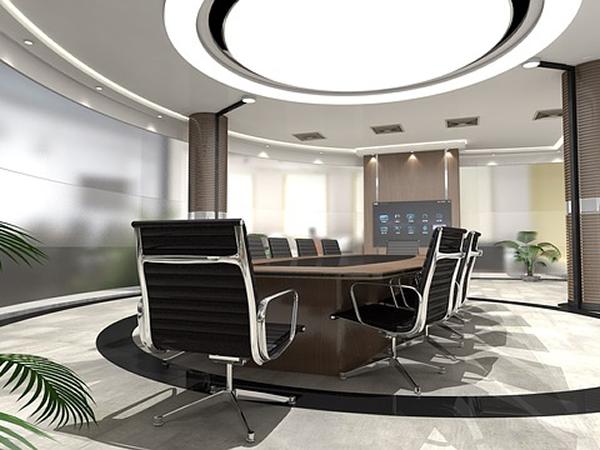Thanks to new legislation, heightened corporate social responsibility and increased productivity, “greening” existing infrastructure has become an immediate action item for many companies anticipating the future.
Smart businesses have already started planning for updates in energy-efficient heating, lighting, windows, ventilation and air conditioning and plumbing, to name just a few.
This kind of pro-active thinking builds not only an office that’s more sustainable, but also a company that is part of the long-term solution. Here are six smart ways to approach sustainable office design:
1. Smarter Windows
Switchable smart glass windows have become an essential component of modern design for their aesthetic, but also offer considerable ROI because they are energy efficient.
With a simple switch, switchable privacy glass can go from fully transparent to opaque in just a second without sacrificing the level of light. By being able to completely control the amount of light, glare and heat affecting the office, businesses will also be able to more effectively control their energy consumption, ultimately reducing costs.
2. Proper Insulation
For smart businesses, insulation is about more than retaining heat. Proper insulation also provides comfort to building employees, maximising productivity by maintaining a uniform temperature. One area that is often overlooked by building owners and managers is within the office itself.
When insulated properly, internal partition walls can help manage heat loss or gain, thereby reducing the overall workload of central heating or cooling systems and conserving a significant amount of energy. There are many options for insulation materials, from wood fibre to cellulose and polystyrene.
3. Strategic Recycling
Environmentally friendly offices contribute not only to global sustainability, but also to the well-being of their occupants within. Incorporating recycled materials into an office design or re-design is both responsible and cost-effective.
Green materials like recycled resin and plastic, recycled plantation timbers, cork, natural fabrics and PVC-free products can be used in creative ways for furniture, flooring and more.
By minimising toxins in the air and maximising recyclability, these elements are gentler on the environment and carry a greater potential for re-use down the road.
4. Responsible Roofs
Sustainable office design extends to what’s happening outside the building as much as inside. One trend in environmental innovation is reimagining the traditional roof with “living” architecture.
Lining the roof with plants and other vegetation, quite literally making the roof green, is a clever way to absorb solar heat and minimise excess storm water runoff.
Another emerging trend is an all-glass roof built with switchable glass technology, which uses solar heat in a different way, by controlling light levels through a specialised electric glass.
Beyond looking aesthetically pleasing, these one-of-a-kind design ideas actively contribute to the bottom line of a building’s energy consumption.
5. Greener Lighting
Lighting, while always overhead, is often overlooked in terms of finding ways to be more sustainable. However, a total of 15 to 30 percent of energy costs are tied to lighting, making it a superior target for maximising efficiency. Best of all, sometimes a minimum investment can yield big results.
For example, switching over to LED (light-emitting diode) light bulbs is an instant energy-saver because they consume just 10% of the energy of incandescent bulbs and last as much as 40 times longer.
In terms of what’s next, look to carbon-based OLED (organic light-emitting diode) bulbs for even more energy savings. And of course, switching off light bulbs altogether in favour of natural lighting is always cost-effective.
6. Water Conservation
Water is a major source of energy use for any building, and pointedly, can also be a drain on financial resources. Installing low-flow faucets, toilets and urinals are simple ways to save water.
A little higher on the engineering scale, finding ways to reuse storm water and other recycled water helps to feed an existing water supply and create new irrigation sources. Overall, exploring new systems for managing the flow of water, which are always evolving, is always a good investment.
Sustainable office design is not some futuristic ideal. It’s here right now. From energy-friendly light bulbs and creative recycling to switchable privacy glass, these innovative solutions can be incorporated by businesses to have a greener footprint today.
And in turn, greener offices keep more green in the bank, because as every business knows, there are so many other places to invest a pound.


